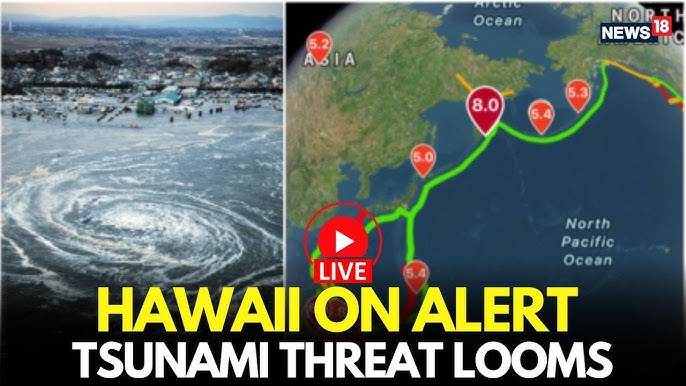Manga prophecy meets reality: Japan, Russia, US on edge after massive earthquake and tsunami waves strike region
A powerful 8.8 magnitude earthquake near Russia triggered tsunamis across Japan and beyond, reviving fears fueled by a viral manga’s prediction of a July 2025 mega-quake.
ADVERTISEMENT
In a chilling collision of fiction and reality, tsunami waves struck the coastlines of Japan on Wednesday, following a massive 8.8 magnitude earthquake off Russia’s Kamchatka Peninsula - just 250 kilometers from Japan’s northern island of Hokkaido. The quake, one of the most powerful ever recorded, has deepened anxieties in a nation already rattled by a viral manga prediction of a catastrophic disaster this July.
The US Geological Survey confirmed the quake as the sixth-largest on record. Tsunami waves reached parts of Japan's northern coast, causing structural damage to several ports. The massive undersea earthquake triggered widespread evacuations across parts of Russia and Japan. Dramatic footage of the tsunami quickly went viral on social media, capturing scenes of coastal buildings in Russia engulfed by rising waters and vast waves sweeping over the land.
The state of Hawaii, parts of Alaska’s Aleutian Islands, and portions of Northern California are currently under a tsunami warning - the highest level of alert, while the rest of the US West Coast remains under a tsunami advisory, indicating a lower but still notable level of risk.
The disaster has reignited attention on The Future I Saw, a 1999 manga by Japanese artist Ryo Tatsuki, which depicts a July 2025 earthquake and tsunami devastating Japan and reaching as far as Taiwan, Hong Kong, and the Philippines. The manga, long dismissed as speculative fiction, has in recent months gained renewed traction across Asia — particularly on social media — for what many view as its prophetic imagery.
While seismologists and disaster experts continue to stress that earthquakes cannot be predicted with any precision, today's events have cast a long shadow. Travel bookings to Japan from Hong Kong, Taiwan, and South Korea had already plummeted since April due to the manga’s viral resurgence. A Bloomberg report noted that some air routes saw cancellations of up to 83% year-on-year in late June and early July. Hong Kong-based airlines have scaled back Japan-bound flights in response.
Japanese tourism officials have repeatedly urged calm, emphasizing the lack of scientific basis for the manga’s claims. Tatsuki’s manga, originally published in 1999 and reissued in 2021 with additional content, is based on dreams the artist claims to have had. The manga includes a scene showing a tsunami engulfing Japan’s coastline in mid-2025 — a scene fans now compare to real footage from today’s aftermath. Her popularity surged after the 2011 Tōhoku earthquake and tsunami, when readers pointed to a panel in her book referencing a “massive disaster in March, 2011.”
Since then, she has become a cult figure across East Asia. The Future I Saw has sold more than 900,000 copies, been translated into Chinese, and remains a topic of fascination and debate in online forums. Enthusiasts credit her with predicting the deaths of Princess Diana, Freddie Mercury, the COVID-19 pandemic - and now, potentially, another seismic event.
Adding to the unease, a Japanese government task force earlier this year warned of an 80% probability of a massive earthquake along the Nankai Trough in the next three decades — one capable of generating 30-meter-high tsunamis. While that report did not forecast specific timing, it has further heightened public sensitivity to natural disaster risk.
For now, recovery efforts are underway in affected port regions. But in a country where tectonic tension is a fact of life, today’s quake, combined with an atmosphere of superstition and digital rumor, has blurred the line between myth, memory, and the mounting fear of what lies ahead.

